Video: TimeWerke Videos on YouTube
The “Colonial Set Menu” seen in the video above is a specially curated food offering by Amara Sanctuary Resort Sentosa to coincide with the launch of its “Amara Heritage Trail” in early September 2018.
The Amara Heritage Trail is a walking trail that allows visitors to discover the nature and history within the resort. The trail, which takes around an hour to complete, can be experienced either self-guided or guided.
Organised by the Amara Sanctuary Resort and the Singapore Tourism Board, guided morning trails will be open from 8 September 2018 and will only be available on weekends.
The trail includes Second World War-related sites like the air raid shelters and former military buildings that have been restored and refurbished. [Watch: Singapore & World War II: The last 2 Air Raid Shelters on Sentosa.]
The “Colonial Set Menu”, priced at SGD38.00++ for two at the time of writing, will allow guests to have a taste of “common dishes enjoyed by British soldiers while Singapore was still a crown colony under the British Administration”, explain the good people over at Amara Sanctuary Resort.
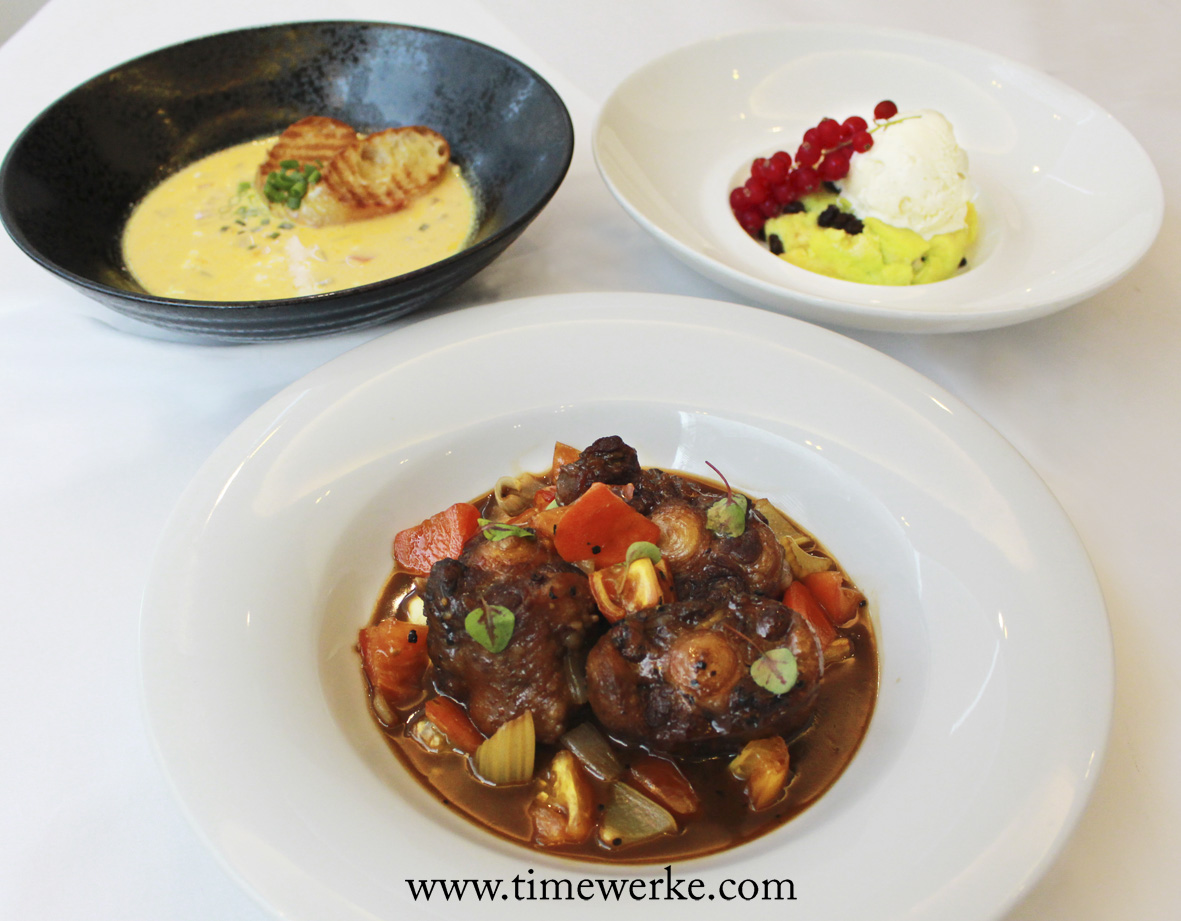
The Colonial Set Menu is a specially curated meal offered by the Amara Sanctuary Resort Sentosa to coincide with the launch of the Amara Heritrage Trail. Seen above is the set meal comprising Mulligatawny soup (top left), Kaya Pudding dessert (top right) and Old Fashion Oxtail Stew (upfront). Photo: Amara Sanctuary Resort Sentosa.
The watch of choice (as seen in the video) that accompanied us for the previews of both the Amara Heritage Trail and the Colonial Set Menu was the Longines Avigation Watch Type A-7 1935.
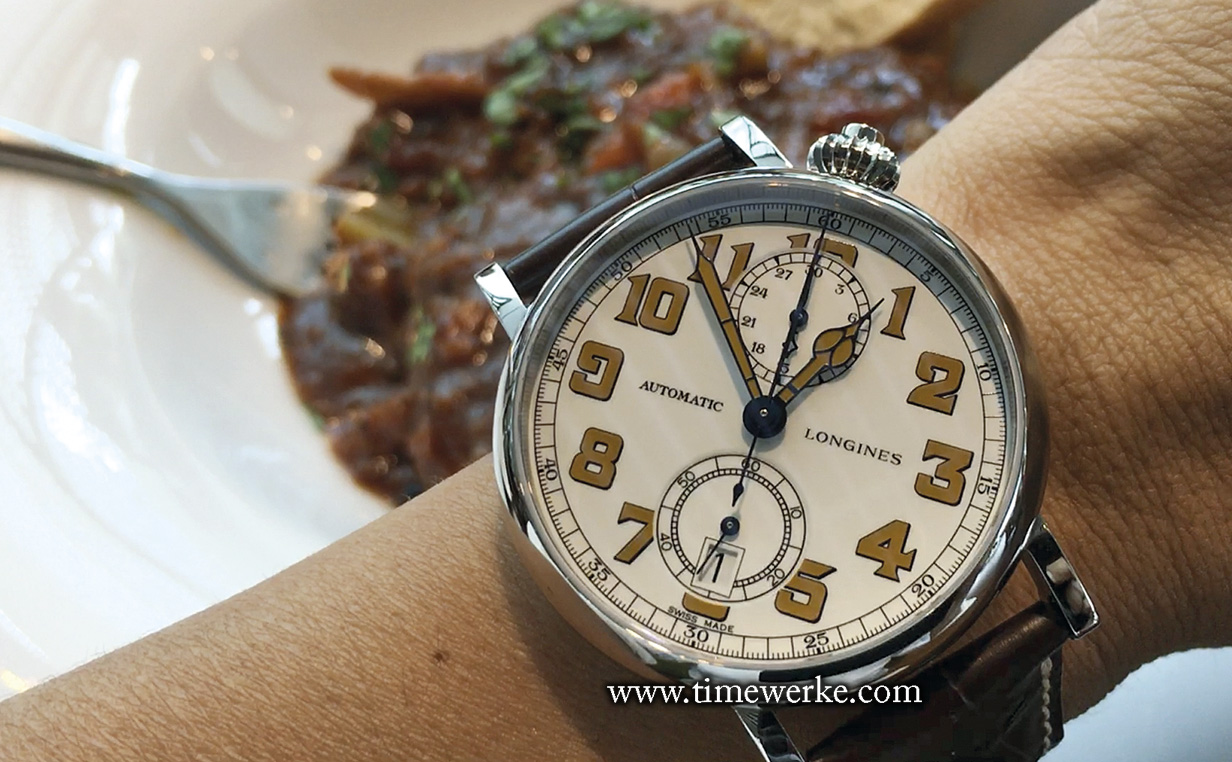
Longines Avigator Type A-7 1935. This is a modern remake of the military chronograph watch produced in 1935 and used by US pilots during that era. Photo:© TANG Portfolio / TimeWerke.
This is a remake of a military watch made in 1935. This is a pilot’s watch featuring the mono-pusher chronograph. Such timepieces were tools supplied to navigators of the US Air Corps for astronomic navigaton or “course determination through the stars”. It features a dial is tilted to offer higher legibility for pilots.
This watch was chosen as it serves as a reminder of that era. Part of the Amara Heritage Trail includes a visit to two pre-war air raid shelters within the resort that were actually used during the Battle of Singapore (8 February 1942 to 15 February 1942).
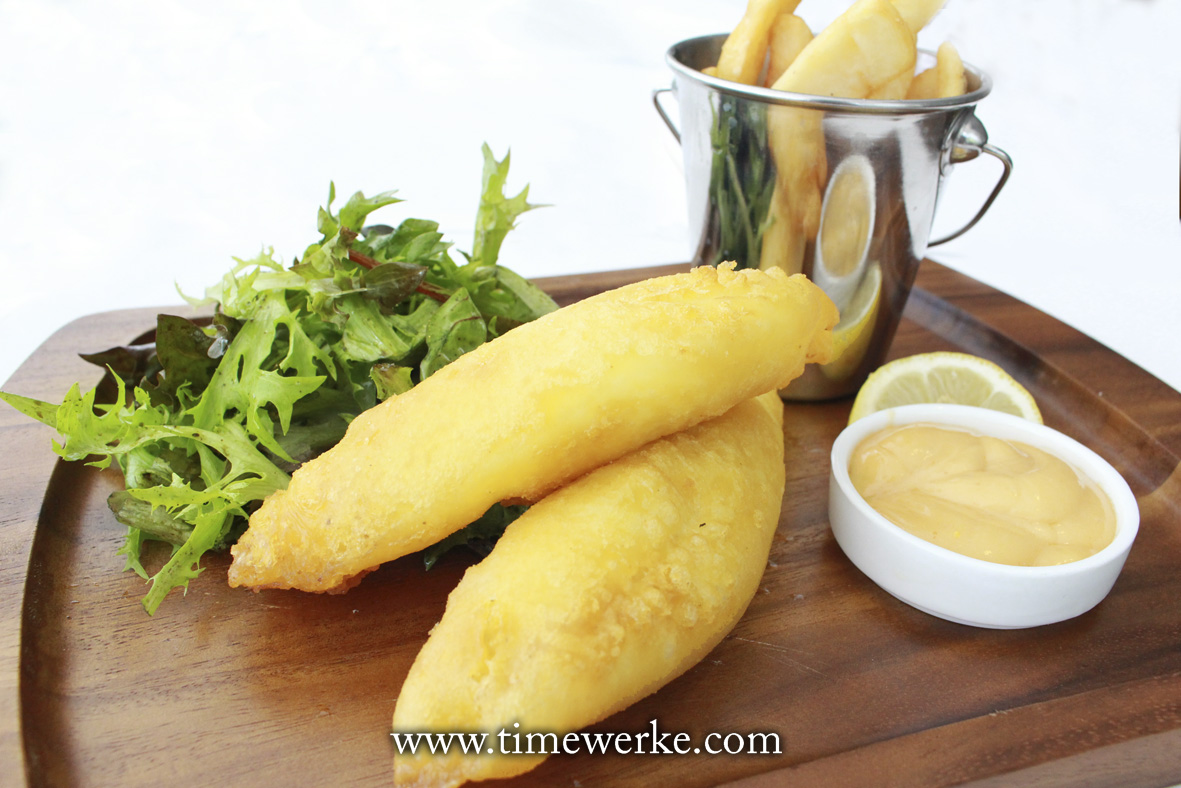
Old British Fish & Chips. This dish dates back to the 18th century. Served with thinly-sliced crisp potatoes, vinegar and tartar sauce. Photo: Amara Sanctuary Resort Sentosa.
We aren’t so sure if these tempting offerings were standard British army dishes but what we are sure of is that the offering: Mulligatawny soup, fish and chips, oxtail stew and Hainanese fried pork chop are well-known colonial cuisine in Singapore and which may well be comfort food for many.
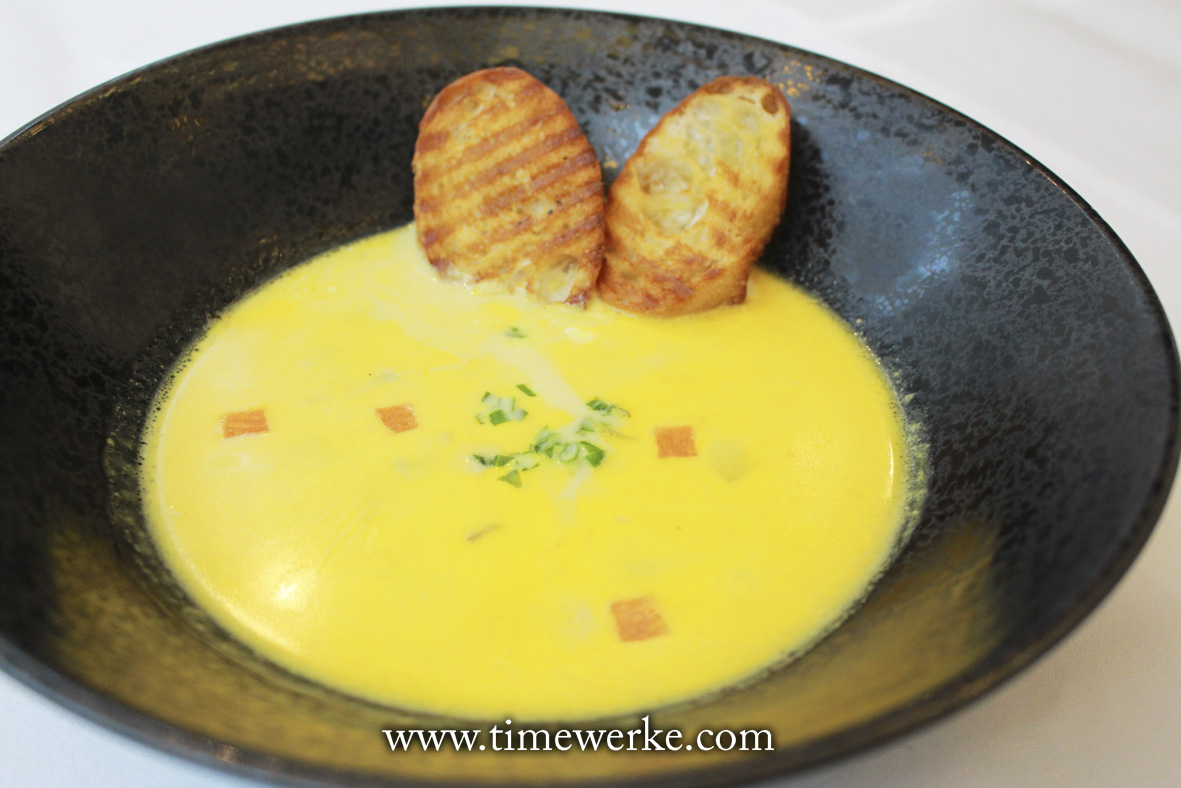
Mulligatawny soup served with diced chicken, vegetables, cream and a pinch of curry powder. Photo: Amara Sanctuary Resort Sentosa.
The Mulligatawny soup dish is one that “exemplified the heydays of the British Empire” and is inspired by India’s very own hot and spicy “rasam”, a South Indian curry soup, according to the article “Mulligawtany – The Soup of an Empire” by Krutika Haraniya published on Live History India (livehistoryindia.com).
Mulligatawny was created by Indian cooks who worked in the homes and clubs of the East India Company officials in the 18th century CE.
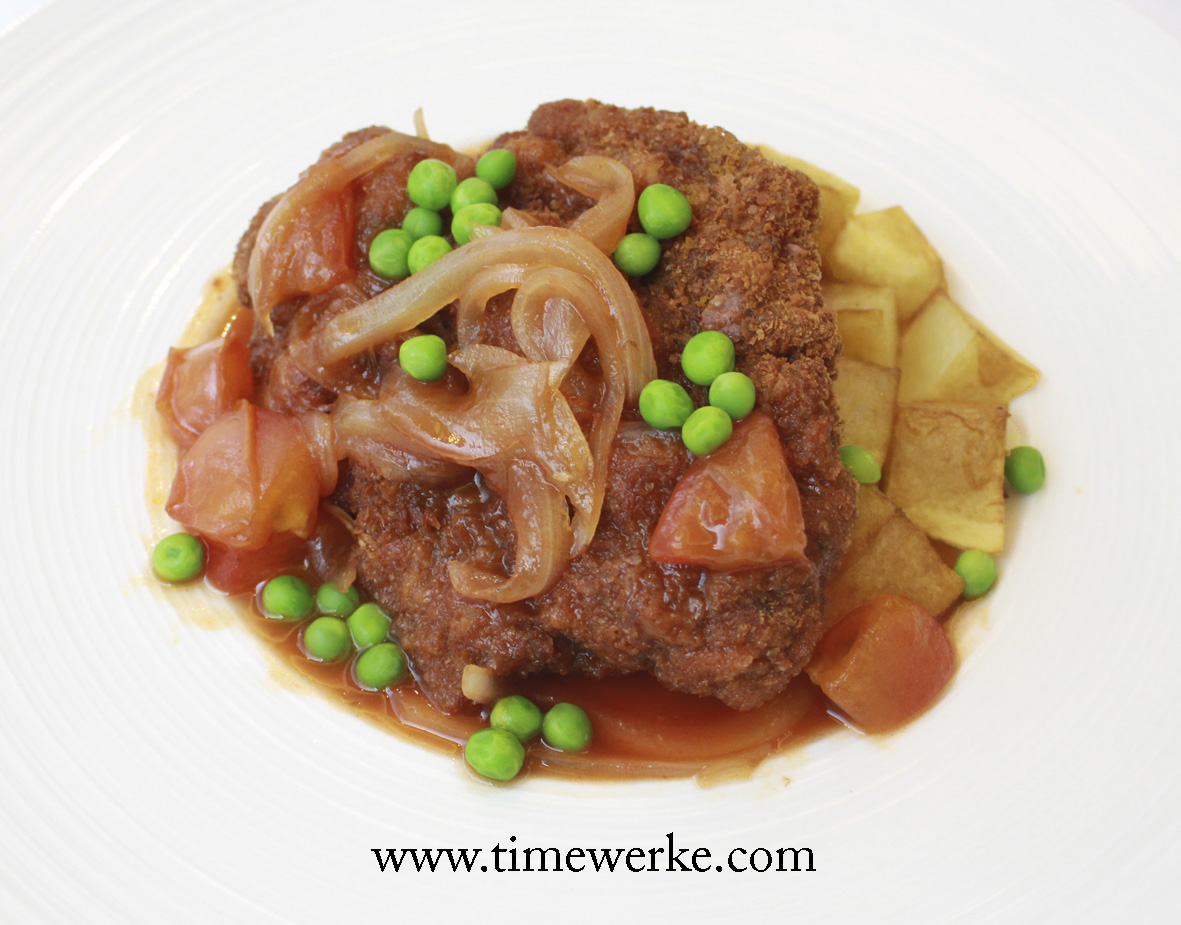
Hainanese Fried Pork Chop. During Singapore’s colonial days, Hainanese cooks prepared this dish for their British employers. Served with crispy potato wedges, garden green peas, diced carrots and tomato onion gravy. Photo: Amara Sanctuary Resort Sentosa.
The Mulligawtany dish was created by Indian cooks to satisfy the need of the British to have a soup before a meal, Haraniya explains in the article. There wasn’t any concept of a soup in traditional South India cuisine and this led to the adaptation of a dish that came close – the rasam.
“Mulligatawny was once so popular that it went with British officers, bureaucrats and even adventurers across the world and into every home in England by the 19th century CE. Interestingly, it also fell off the dinner table as the sun set on the British Empire,” Haraniya adds.
The name “Mulligatawny” is a corruption of the Tamil word “millagu” which means “pepper” and “thanni” which means “water”.
“As its name implies, this Anglicised version of the southern Indian Dravidian language for “pepper broth” is made with peppers.
“It is usually based on a chicken stock and curry with cream, pieces of chicken, onion, celery, apples and almonds garnished with rice. The cream was very likely, original coconut milk,” according to the FoodReference.com (“Mulligatawny Soup History”).
Haraniya’s article confirms that Mulligawtany was commonly served in British army barracks during the late 18th century.
Scottish explorer, physician and Christian missionary Dr David Livingstone (1813 to 1873) even wrote about Mulligatawny in his travels to Africa.
Mulligatawny is mentioned by Australian lawyer and novelist John Lang (1816 to 1864) during his travels to India. Lang had Mulligatawny soup and rice, cold lamb and mint sauce with sherry and beer for tiffin (a light snack) at Jack Apsey’s home in Mussorie, northern India.
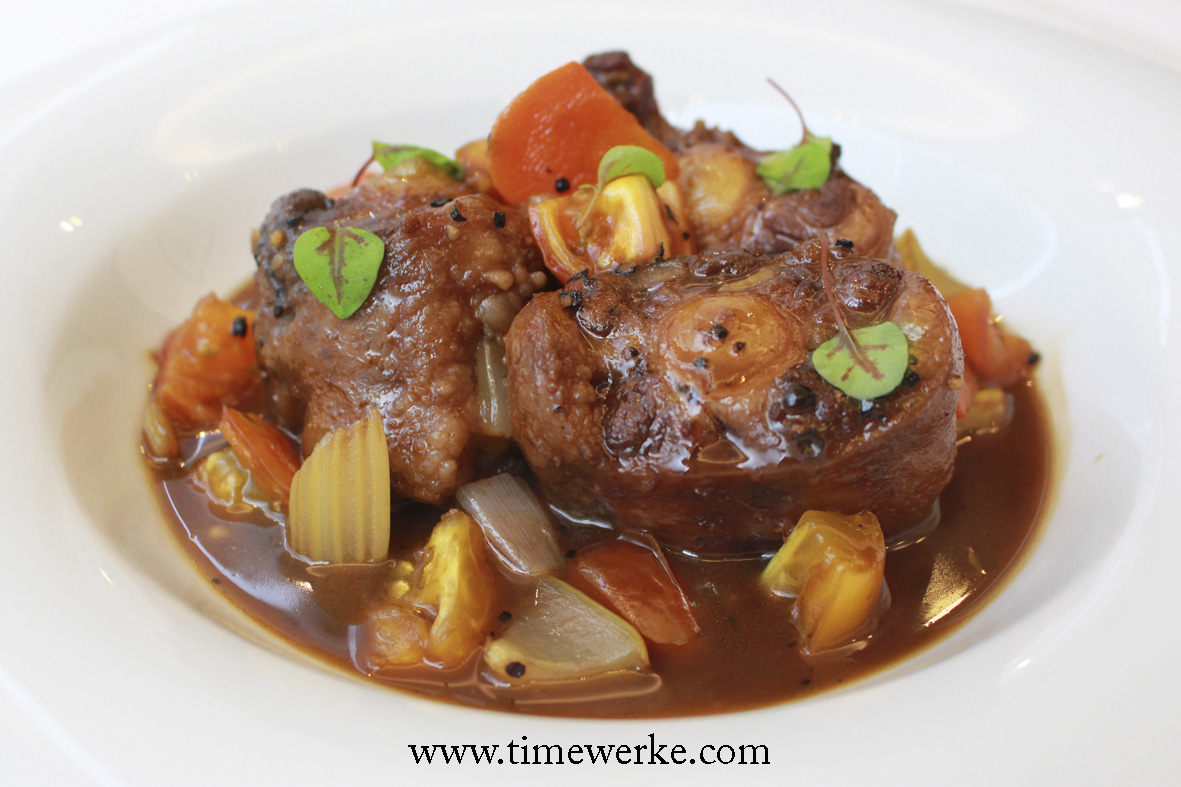
Hainanese Oxtail Stew. It said that this dish was popular during the 1960s in Singapore. Photo: Amara Sanctuary Resort Sentosa.
For the main dish, we opted for oxtail stew. Is this a dish of British origin?
Well, there is one story that mentions that this dish originated from France. During the French Revolution it seems, as poverty became more widespread, it dawned upon a noble not to waste food and use the tail from a cow for the soup. Back then, the cow hides sent to the tanneries still had their tails attached.
According to Chinatown London (chinatown.co.uk), it is oxtail soup that is “… a quintessential British comfort food with humble beginnings. Thought to have originated in London’s east end by Spitafields-dwelling Huguenots in the seventeenth century, the dish combines beef tails in a vegetable stew.”
Huguenots were Protestants in France during the 16th and 17th centuries, many of whom suffered severe persecution for their faith, as explained on Brittanica.com.
Oxtail stew is an old-fashioned comfort dish, writes Cecilia Joven Ong on makansutra.com, adding that it used to be a popular dish during the British colonial era. Its origins are somewhat murkey, she notes, with some classifying it as a traditional Hainanese delicacy while others describe it as an English dish.
Today, perhaps Hainanese Chicken Rice is what locals and tourists alike can relate to more. Who are the Hainanese? The Hainanese are those who originated from the Chinese province of Hainan in China.
“The dishes of colonial times were mostly created by the Hainanese. They were amongst the last immigrants from China to enter Singapore and by then, most of the jobs were filled. That is why the majority ended up as cooks. Many cooked for British employers. After they learnt the British cooking style, they also innovated and created ‘Hainanese’ dishes,” explains Jeffrey Tan, executive chef at Amara Sanctuary Resort Sentosa.
The kaya bread pudding dessert has what is termed a “local twist”. Kaya, a coconut jam popular in Singapore and Malaysia, is made with sugar, coconut milk, eggs and pandan. This Amara Sanctuary Resort dessert is served with vanilla ice-cream.
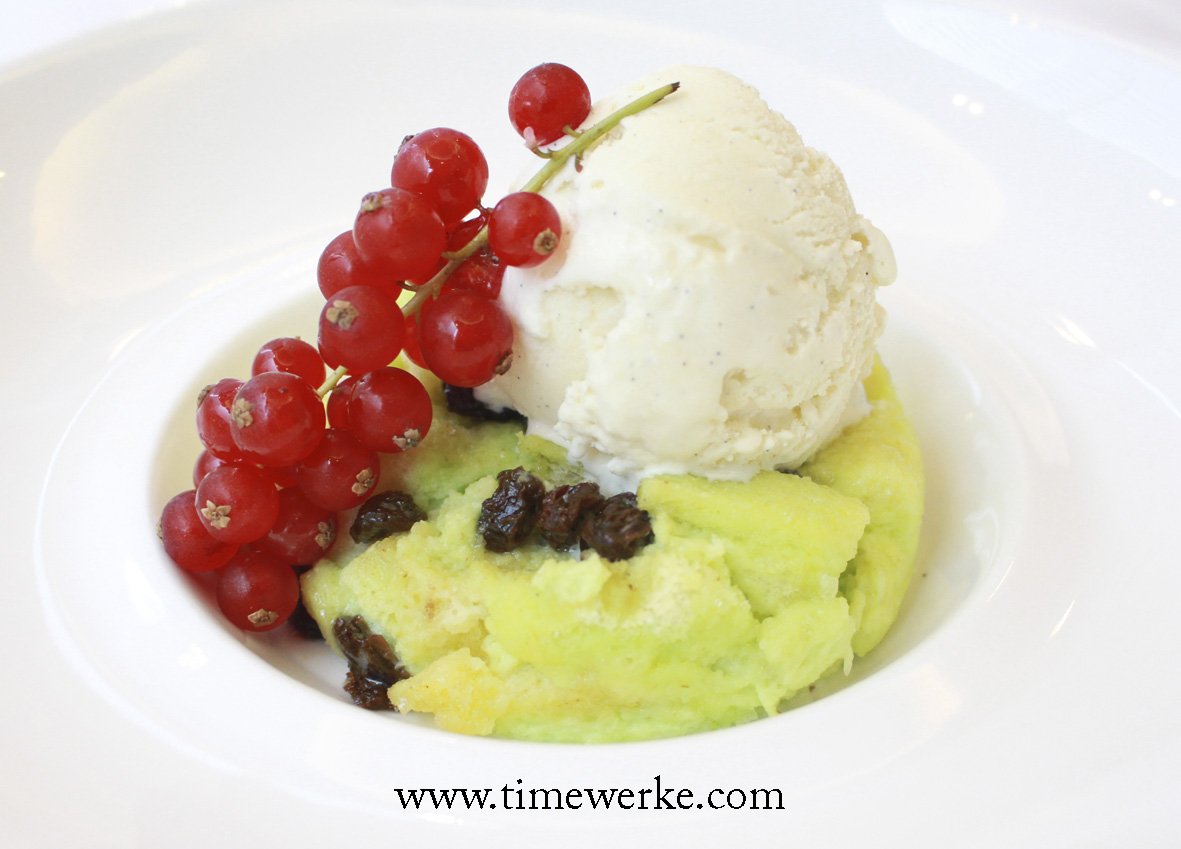
Kaya Bread Pudding. Served with “a local twist” and vanilla ice-cream. Photo: Amara Sanctuary Resort Sentosa.
The Colonial Set Menu is the perfect complement to the Amara Heritage Trail as the food trade played an important role in British history.
Historian Lizzie Collingham, an Associate Fellow of Warwick University and the Royal Literary Fund Fellow at Newnham College, Cambridge and author of “The Taste of Empire: How Britain’s Quest for Food Shaped the Modern World” (also known as “The Hungry Empire”), argues in her book that Britain’s quest for foodstuffs led to the rise of the British Empire. In other words, food was the driving force of the British Empire.
Collingham reasons that the food trade or food imports into Britain gave rise to the empire. “The empire that grew out of this trade is often referred to as Britain’s First Empire,” as noted in the introduction of her book. Back in those days, only British ships could transport produce from English settlements in foreign lands as stipulated in the Navigation Acts.
“For most of the eighteenth century, the term ‘empire’ did not denote the possession of territory but the power to dominate trade. The first British Empire was ‘an empire of the seas’.”
References:
i. Krutika Haraniya, Mulligawtany – The Soup of an Empire, 6 December 2017, Live History India (livehistoryindia.com)
ii. Mulligatawny Soup History, foodreference.com
iii. Cecilia Y. Leong-Salobir, Food Culture in Colonial Asia: A Taste of Empire, 2011, University of Wollongong, Australia
iv. John Lang, Wanderings in India and Other Sketches of Life in Hindostan
v. Chinatown London (chinatown.co.uk), The Curious Origins of Oxtail Soup (Sop Buntut)
vi. Cecilia Joven Ong, Oxtail Stew – slowly cooked and slowly forgotten, makansutra.com
vii. An Adventure in Food, feedpenman.weebly.com
viii. Lizzie Collingham, The Taste of Empire: How Britain’s Quest for Food Shaped the Modern World
